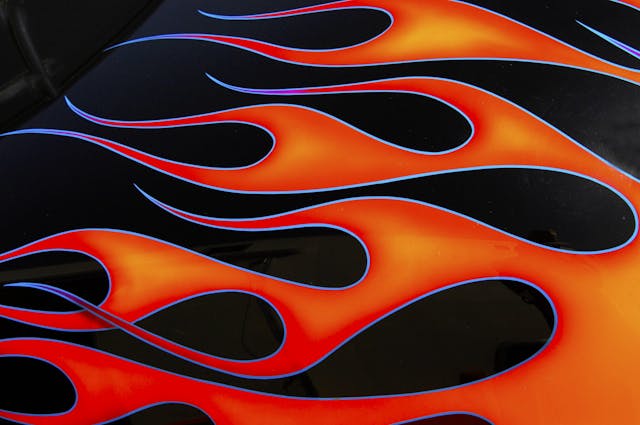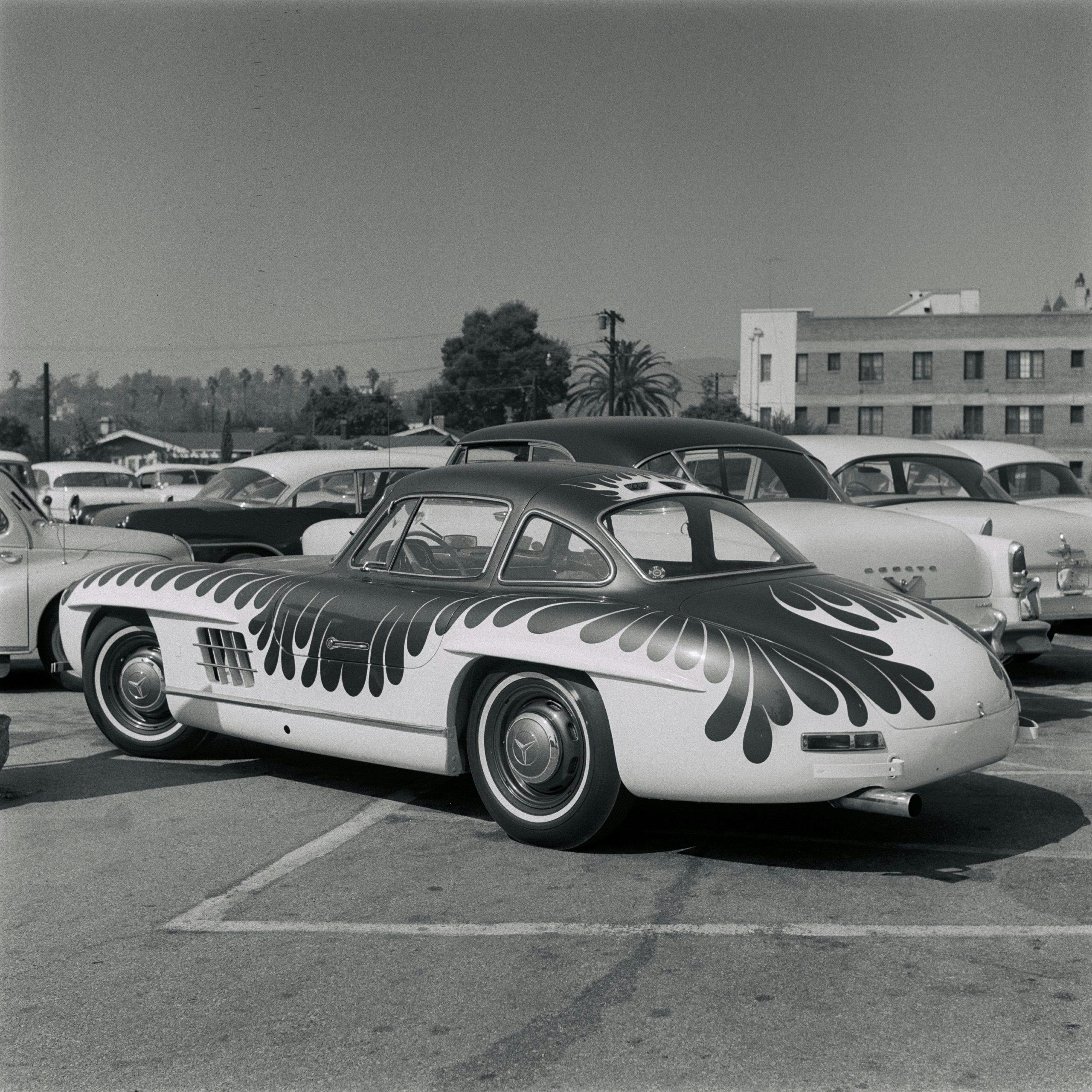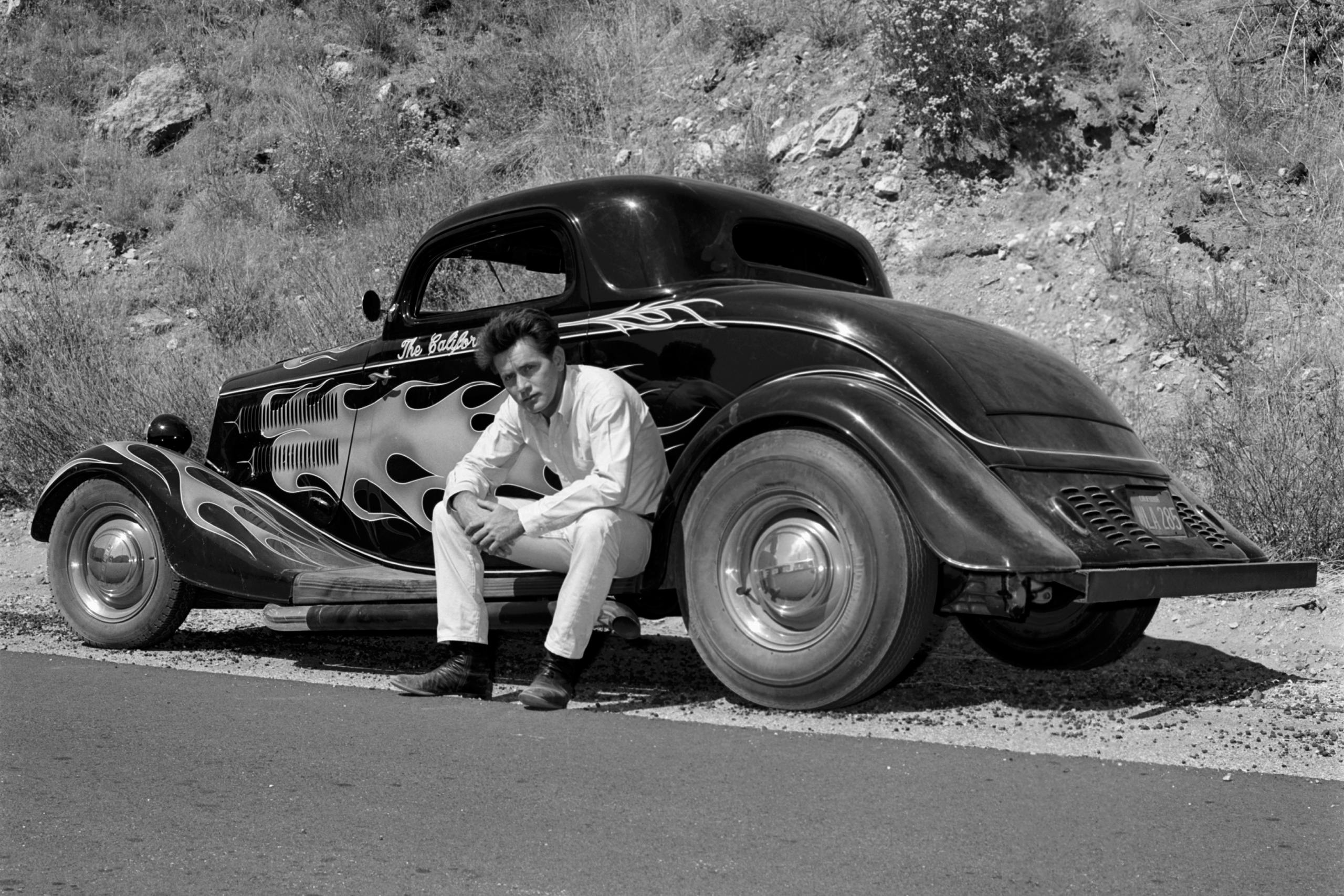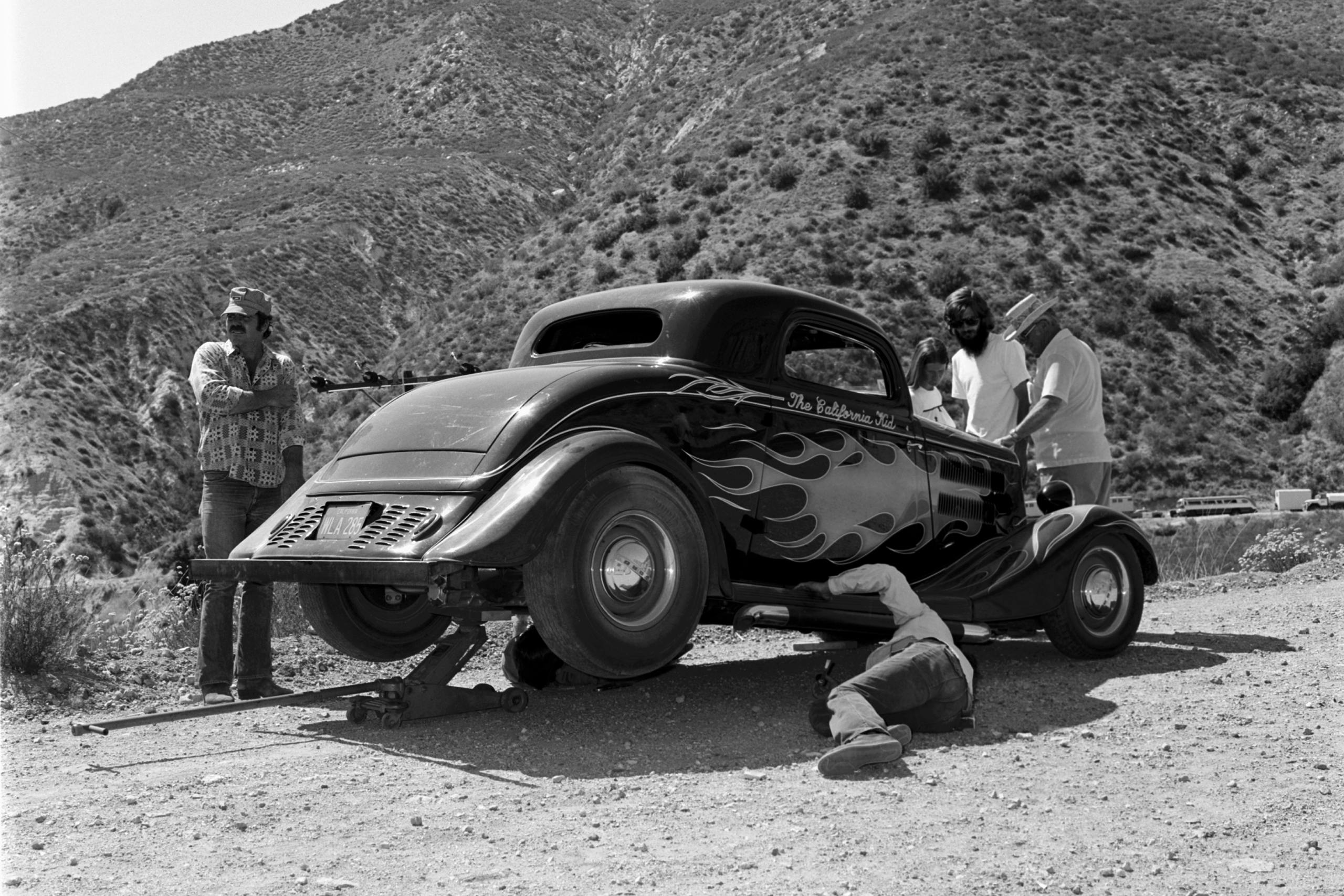Flame Job: The “hottest” cars were an entirely American invention
When you see the phrase “hot rod,” most likely you picture something like a ’32 Ford painted with flames, known as a “flame job.” Such cars have been part of hot-rodding culture for decades, but I’ve long wondered where the idea to illustrate fire on a car actually came from. Who were the original flame artists, and what inspired them? As in all automotive trends, the first example of flames is difficult to identify, but I’ve been investigating this topic for a while now, and here’s what I’ve learned.
Fire in the hole!

My search started with a photo of privateer Fred Friday’s midget racer completely incandescent at Gilmore Stadium in Los Angeles, in 1938. The conflagration was so large that only the top of Friday’s helmet and a bit of his shoulder were visible through the fireball as he sped down the track, looking like a wheeled meteor entering Earth’s atmosphere. Journalist David Carroll snapped the incredible photo, which was published as “picture of the week” in newspapers across the country. How many slack-jawed teens building a jalopy to race at their local strip stared at that image of Flaming Fred in amazement? Surely it was this photograph that inspired flame graphics on hot rods, right?
Birth of the flame
We actually have to go back a little bit further to find the first machine with a flame graphic painted on its side. It’s another race car: 10-time Indy 500 participant Kelly Petillo’s 1934 race entry, an absolute stunner. Petillo was one of many racers sponsored by Earl Gilmore’s Red Lion fuel company, a West Coast gas-station brand with the slogan, “Roar with Gilmore.’’ The car was a promotional piece as much as a bona fide racing car. For maximum “wow” factor, the entire frame and grille insert were chrome-plated, and the body was painted in the iconic Gilmore cream and bright red, with leaping lion logos above the lettering, RED LION SPECIAL.

What made the livery unique was how the red paint on the nose transitioned into the cream hue at the back: Tiny flames licked the top and sides of the hood and the bottom of the cowl. Who decided to illustrate flames on the car? Likely Gilmore himself, as a dynamic symbol of speed and motion circling the track. The flashy paint would also make the car more photo-worthy and easier to follow in a pack at speed. Despite starting on pole, the Red Lion Special finished a middling 11th, but Petillo brought it back to Indy the next year (albeit with a more subdued flame job) and won the coveted race.
The Von Dutch influence
Just before WWII, flame paint jobs began to appear on hot rods that were being raced at El Mirage, in the California desert. By the late 1940s, you’d see them on yet more competition cars, and then into the 1950s, the theme migrated to street-driven jalopies. Hot rods were always symbols of home-built speed and ingenuity, with a touch of rebellion. No automotive artist of the era personified that countercultural movement as much as Kenneth Howard, far better known as Von Dutch. When wild nightclub owner and Hollywood crooner Earle Bruce brought his nearly brand-new 1955 Mercedes 300SL to Dutch, Bruce asked him to paint something over the car’s fading areas of root beer bronze–colored paint, which had itself been sprayed on by none other than Barris Kustoms.
Dutch was no stranger to painting flames, often claiming he was inspired by WWI fighter planes going down in battle, so he was up to the task. The result was a wild flame job that consumed the entire Gullwing body, but rather than running from front to back, the licks rose up from solid white at the rocker panels and were detailed with yellow pinstriping. The scheme was incredibly bold, yet well-executed. Bruce, in turn, got the effect he wanted: turning heads and poking the establishment. According to the book Von Dutch, The Art, The Myth, The Legend, Bruce’s SL was not well received. “After I turned this thing loose on the world, it caused accidents,” recalled Dutch. “People couldn’t accept a flamed 300SL Gullwing back then. They thought it was desecrating a shrine.”
Larry Watson was a contemporary of Von Dutch but worked in a different style. His game-changing “Seaweed Flames” had an organic, flowing shape compared with the sharper-edged crab-claw flames of the time. He painted a black ’55 Chevy Bel Air with this new, longer flame style and sprayed it silver and green. The owner was at a Long Beach, California, drive-in when someone yelled, “Look at all the seaweed on that car!” and the moniker stuck.
Nixon-era fire
Flame jobs on custom cars flourished through the 1960s, and by the end of the decade, counterculture choppers and custom vans with wild paint also were in vogue. In the 1970s, airbrushing became the preferred tool to enable more realistic graphics, with flames spreading like … well, wildfire.

Carmakers wanted a piece of the action, which eventually led to the 1973 Pontiac Firebird hood decal, colloquially referred to as the “Fire Chicken.” Meant to represent a phoenix rising, the flames are more graphic than organic. Still, it shows that flames on cars had reached a broader audience of rebels—or wannabes—than ever before.
Fueled by the popularity of George Lucas’s 1973 film American Graffiti, a made-for-television movie a year later called The California Kid had a huge impact on budding hot-rodders. The film was set in the late 1950s and starred Martin Sheen driving a boldly flamed ’34 Ford coupe. His character faced down a corrupt small-town sheriff, and the car was a central element in the story, personifying rebellion right along with Sheen.
Flamestreaming
Like everything else, the flame graphic has evolved. It went from hyper-realistic in the ’80s to a trendy, tribal style in the ’90s, and now it looks more traditional again. This is in large part due to a younger generation of hot-rodders who are embracing 1950s–60s cars at events like Bonneville and The Race of Gentlemen.
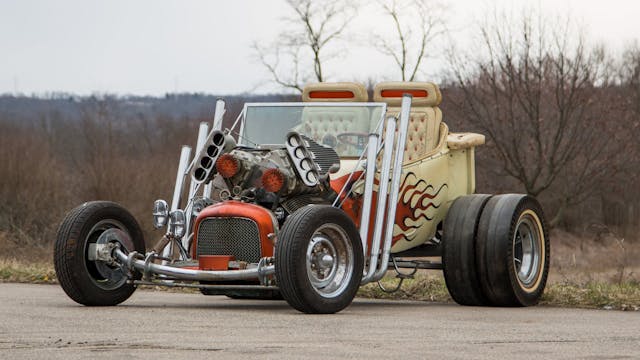
In 2018, a dilapidated and nearly unrecognizable hot rod called “T-Bucket” (built on the chassis of a 1931 Ford Model A V-8 roadster) sold for an astonishing $484,000 at Mecum. Also known as “Kookie’s Kar,” it was built by hot-rodder and actor Norm Grabowski and was featured in a 1957 Life story on hot-rodding culture. Grabowski’s car was then driven by the breakout character on 77 Sunset Strip, Gerald “Kookie” Kookson III. I’d argue that this little jalopy is the vehicle that cemented a relationship between wild hot rods and flame jobs forever.
After a stunning restoration back to its 1957 version, including a perfect replication of the flames and pinstriping originally applied by Dean Jeffries, the Kookie Kar won its Hot Rod Cover Car class at Pebble Beach in 2019. This was the first (and perhaps the last) time that a “lowbrow” flamed vehicle rolled across the world’s most prestigious car show stage, but one thing is certain: Flame jobs, which started as the crowning touch of countercultural personalization in the ’50s, have now been embraced and celebrated by the high-end collector car community, elevated to a cult-like status by the stripe brushes of Jeffries and Von Dutch.
Jay Ward is a creative director at Pixar Animation Studios, where he oversees the Cars franchise. He cofounded Billetproof, a hot rod and custom show, and is an honorary judge at Pebble Beach. As a young man, Ward built his own 1929 Model A roadster hot rod for less than $7000—and still drives it.
***
Check out the Hagerty Media homepage so you don’t miss a single story, or better yet, bookmark it.
